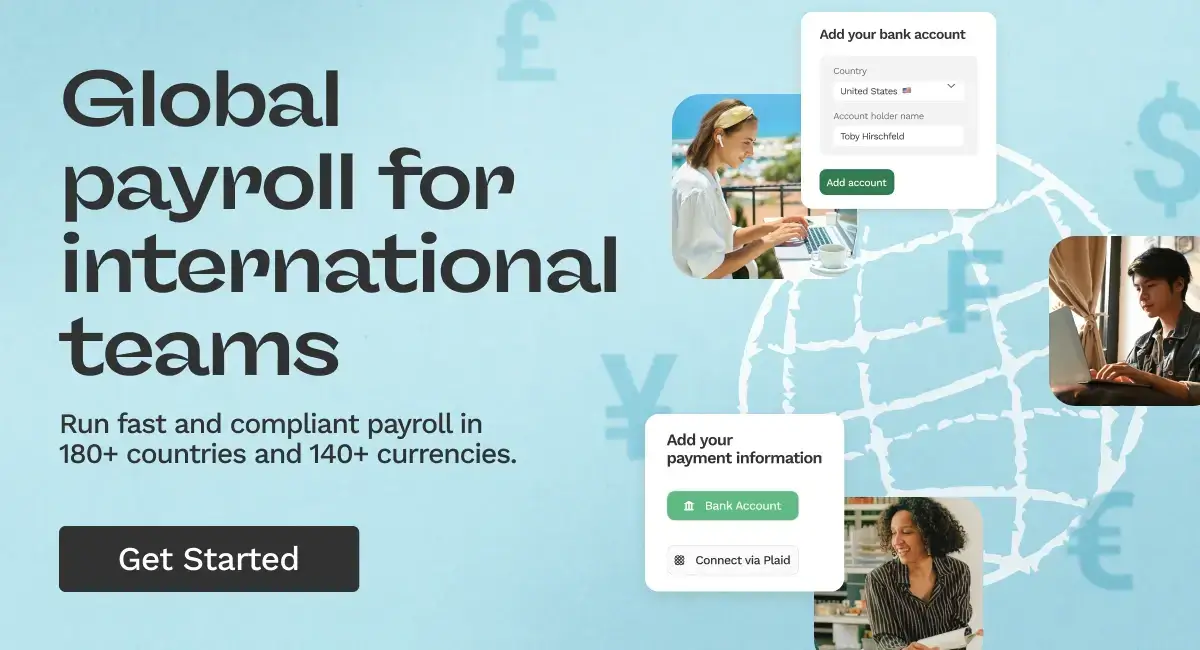When employees spend their own money for work, whether it's on travel, meals, or supplies, they expect employers will pay them back quickly and without hassle. A smooth expense reimbursement process means employees won’t have to cover company costs out of pocket.
Read on to learn how to create an efficient reimbursement process and why it matters. We’ll also show you ways to simplify expense management and keep your accounting accurate.
What is expense reimbursement?
Expense reimbursement is how companies pay employees back for business-related costs incurred while performing job duties. It also ensures HR teams record every transaction properly for accounting and compliance.
Understanding how reimbursement works starts with clear documentation. To qualify, employees must submit expense reports with receipts. Common reimbursable expenses include:
- Client meals and meetings
- Travel costs
- Training and certification
- Work supplies and software
Why are expense reimbursements important?
Reimbursing employees fairly and on time protects employee well-being and maintains the trust that drives a strong workplace culture. Any delays or refusals to repay legitimate expenses can damage morale and create friction between teams.
For employers, company reimbursements also bring transparency and control over spending. Every approved claim tracks where an organization’s funds are spent and keeps records ccurate alongside other payroll deductions.
This documentation helps you remain compliant with IRS rules. Proper expense management ensures legitimate reimbursed expenses don’t become taxable income for employees, while giving employers the ability to deduct qualifying business costs.
Examples of expense reimbursements
It helps employers to use standard types of expenses to keep policies consistent and help reduce confusion. Most reimbursable costs fall into the following categories:
- Travel expenses: Reimbursements for approved business travel often cover airfare, hotels, and ground transportation—such as rideshares and rental cars. Many companies also use per diem allowance rates to cover daily meal costs while traveling, which keeps spending predictable.
- Meals: This category includes the cost of food and drinks during client meetings, business travel, and company events. Most policies call for itemized receipts and per-person caps, and some require approval for higher-cost meals or exclude alcohol altogether.
- Office supplies: Employees can request reimbursement for the equipment they need to do their jobs, such as notebooks and approved software. Defining what qualifies and setting clear spending limits reduces confusion and ensures faster approvals.
- Mileage: When employees use their personal vehicle for work-related travel, the costs may be covered by their employer. Employers typically calculate repayment using a standard rate per mile for business trips, but it won’t cover regular commuting to and from work.
- Entertainment: Reimbursements here are usually for client-facing activities meant to build relationships. This includes attending professional events and hosting dinners. Because these can vary in cost, many organizations enforce stricter limits or approval processes.
- Training and certifications: This category supports professional growth and covers costs like conference fees, online courses, and certification exams. These expenses typically require pre-approval and must directly relate to the employee’s role or development goals.
Common policies and best practices
A strong expense reimbursement policy clarifies expectations, reduces back-and-forth, and helps employees and finance teams stay aligned. Here are a few key pieces to include when building or refining your expense reimbursement process.
Clear guidelines on allowable expenses
Organizations should define which expenses are reimbursable and which aren’t. That might mean listing travel, meals, and office supplies as eligible while providing a list of common examples that will be excluded. Setting clear boundaries prevents confusion and can save time responding to questions about allowable expenses.
Submission timelines and review steps
Establish deadlines for submitting expense reports and reviewing claims. Many companies require submissions within 30 days of purchase. A predictable process helps employees know when to expect reimbursement and when to reach out in case of delays.
Required documentation
Employees must provide receipts and obtain approvals to remain compliant with company policy and expense reporting standards. Employers should request itemized receipts and clear descriptions of the expenses to confirm they were for business purposes. Whether employees then scan expense reports through an expense app or upload PDFs, having everything in one place keeps records clean and easy to verify.
Spending limits and approval levels
It helps to set limits on how much can be spent in each category—and define who approves exceptions. For example, a manager might approve smaller expenses, while finance reviews anything above a certain amount. This structure supports accountability, reducing risks to the organization.
Compliance with tax and legal requirements
Ensure your policy meets IRS requirements and local tax rules. An accountable plan helps your team document and submit expenses properly so the IRS won’t classify them as taxable income. If the policy fails to meet these standards, the IRS may treat reimbursements as post-tax deductions, which affect employee take-home pay. An annual policy review can prevent your organization from falling out of compliance and failing audits.
Challenges in expense reimbursement
Even with the best policies, expense reimbursement can still cause headaches. A few common pain points show up across companies of all sizes, and if they’re not addressed, they can quickly erode trust and compliance.
Delays that frustrate employees
When reimbursements drag on, employees end up waiting weeks to get their money back. That delay can strain personal budgets and morale, especially for team members who travel often or make regular purchases for work. The longer it takes, the more it feels like the company doesn’t value their time or effort.
Fraudulent or inaccurate claims
Missing receipts and duplicate submissions can lead to inflated costs and policy violations. If you don’t have a reliable review process, these errors can go unnoticed, compromising expense management. Digital tracking and clear approval workflows help catch issues early and ensure expenses are legitimate and documented properly.
Manual, error-prone processes
Reimbursement processes that use spreadsheets and email threads often lead to lost receipts and mismatched entries. These manual systems slow down tasks and increase the risk of mistakes. Automating expense reports and centralizing documentation saves time and improves accuracy.
Compliance risks with tax regulations
Tax rules around business expenses aren’t static. Improper documentation or misclassifying a business expense could make a legitimate reimbursement part of taxable income or raise red flags during an audit. Keeping records organized and policies current and enforced protects both the company and employees from unnecessary headaches.
Inconsistent policy enforcement
When some teams follow the rules and others don’t, frustration can spread quickly. Employees start to raise questions, and managers get stuck in an awkward middle ground. A consistent, organization-wide process with standardized expense categories, clear documentation, and timely approvals builds trust and supports a fair reimbursement process.
Simplify global expenses and reimbursements with Oyster
Managing expense reimbursements across countries is complex. Different currencies, tax laws, and approval processes can slow payments and create compliance risks. Oyster simplifies global expense management, bringing it all together in one platform.
Our native expense reimbursement module lets employers submit, review, and approve expenses in bulk, keeping every payment consistent and compliant. It connects directly to payroll, making it easy for employees to receive reimbursements on time and in the right currency, no matter where they’re located.
Oyster also integrates with tools like Expensify, Concur, and Zapier, syncing data across systems so finance teams don't have to juggle multiple workflows. With built-in controls and country-specific compliance, businesses can reduce admin work and give teams a smoother reimbursement experience from start to finish.
Explore Oyster’s global payroll to streamline reimbursements and efficiently manage every expense.

About Oyster
Oyster is a global employment platform designed to enable visionary HR leaders to find, engage, pay, manage, develop, and take care of a thriving distributed workforce. Oyster lets growing companies give valued international team members the experience they deserve, without the usual headaches and expense.
Oyster enables hiring anywhere in the world—with reliable, compliant payroll, and great local benefits and perks.
.webp)







